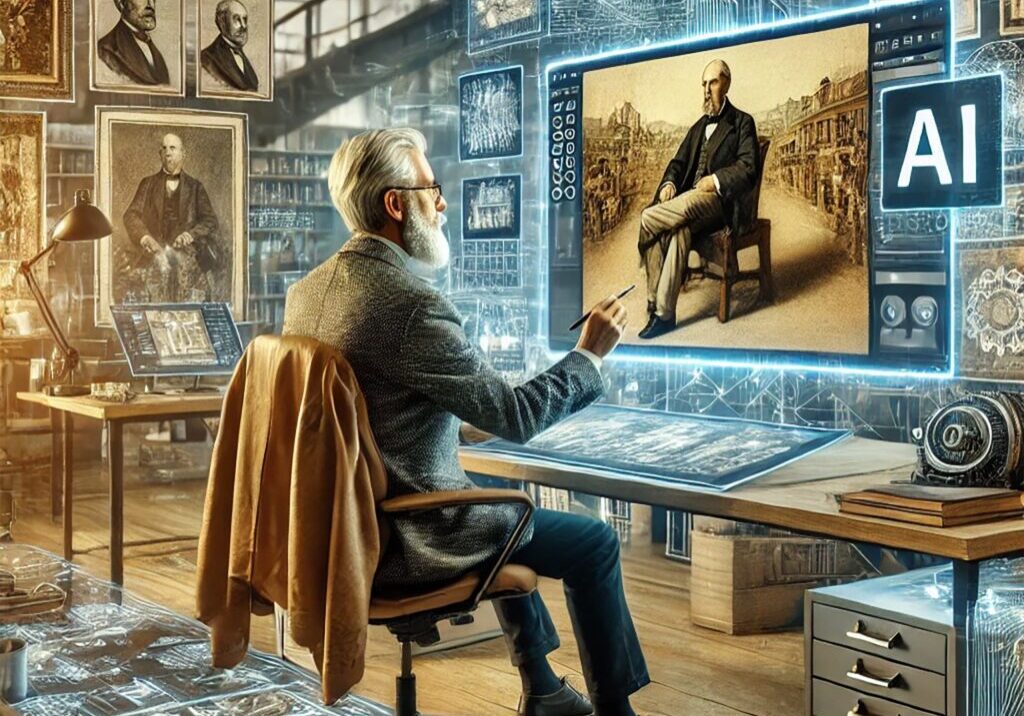
Symbolic Strokes: Objects Hidden in Revolutionary Portraits
Not every revolution wears a uniform. Some slip onto a canvas quietly, disguised as a glove, a scroll, or a compass resting on a side table. In Revolutionary portraiture, symbolism was not always overt. It lived in the margins. It hung in the background. It perched on fingertips or rested on the edge of a chair. As I painted the mural, I paid close attention to this language.
The objects in a portrait may seem secondary, but they often speak the loudest. Colonial artists understood that likeness alone was not enough. A sitter’s identity came through both their face and their possessions. A globe in the corner suggested education. A military sash represented service. A pair of gloves could indicate refinement or restraint. These items were chosen, not incidental. They turned portraits into visual essays. One of the clearest examples is John Singleton Copley’s portrait of Paul Revere. Revere sits in a shirt, not a coat, with a teapot cradled in his hand. That teapot tells a story. Revere was a silversmith, and the object ties him directly to his trade. But it also nods to the political climate. Tea was no longer neutral.
By placing the teapot front and center, Copley anchored Revere to both economy and resistance. The portrait becomes more than a record. It becomes commentary. Charles Willson Peale often placed books or instruments near his sitters. A telescope implied vision. A violin suggested harmony. These symbols worked in quiet coordination with the sitter’s expression. In Peale’s portraits of Jefferson and Franklin, the presence of papers, maps, or inventions strengthens their intellectual stature. They are not shown mid-speech. They are shown surrounded by thought. When I painted mural figures, I borrowed this technique often.
A scroll appears in the hands of a young woman standing at the edge of a protest. A compass rests in the lap of a quiet thinker. A candle flickers near a child, illuminating more than just his face. These are not decorative additions. They are anchors. They give the viewer a way into the character’s world without requiring dialogue. Symbolism also shaped how space was used. A curtain drawn to one side might suggest hidden knowledge. A window in the background could hint at the future. The direction a chair faces – toward or away from the viewer – can shift the mood entirely. I studied these arrangements closely when planning mural compositions.
A seated figure might lean slightly, drawing the viewer toward a table where a document waits unsigned. Another might rest a hand on a half- rolled map, inviting us to wonder what borders it once defined. Even color can be symbolic. A crimson ribbon can signal sacrifice. A golden thread might whisper of influence. In colonial portraits, these details were rarely explained. They were left for the viewer to interpret. I took that same approach in the mural. Let the viewer find them. Let the meaning arrive slowly. Symbolic objects do more than decorate. They build context. They carry emotional tone.
They reveal the sitter’s values without breaking the stillness of the pose. Revolutionary portrait artists knew that history would not always be told in words. Sometimes it would rest in a folded letter or a quill just touched to ink. As I stepped back from each finished section of the mural, I looked for these hidden voices. Not every symbol needed to be seen immediately.
Some waited in the corners, just as they did in the portraits of the past. They did not interrupt. They did not distract. They simply stayed. Because in every great portrait, there is something meant to be found.

